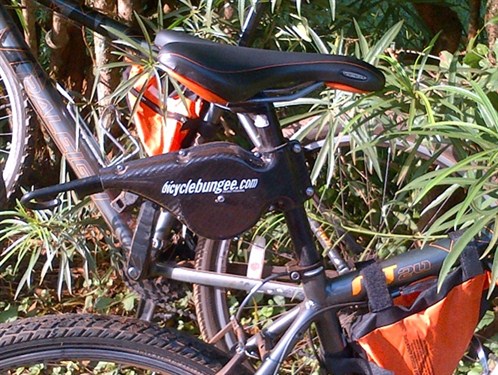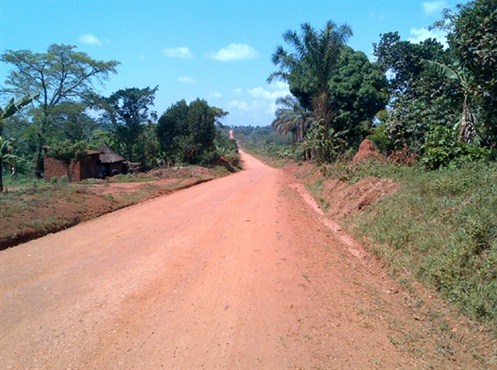Uganda Bike Ride 2013 part 3
February 10, 2013Sunday, 10 February 2013
Jinja to Luwero
Woken from our sweet slumbers at 5:30. We found the power was off and we (and presumably everyone else) were in darkness in the middle of our ablutions. Fortunately, the backup generator came to our rescue, and we all arrived for breakfast at 6am. It was still dark outside, dawn coming always at 7am regardless of the season
Calisthenics were as usual conducted in a circle around Henk and, with dawn breaking and the trucks loaded, we were ready to hit the road. Our route took us back through Kayunda Town. It was still quite cool as the sun rose over the banana plantations and smallholdings around us. We had a fine view of the sunrise as we cycled east. The going was relatively smooth and even. On either side of the road were homesteads and smallholdings, with mango and avocado trees, banana palms, pineapple plants growing in the shade of the palms, jack fruit trees and much else. The simple homes all looked neat and tidy, and well cared for.
The road continued across swampland and the neat little smallholdings gave way to acres of papyrus. We observed a fisherman in a dugout canoe make a catch.
After about a dozen kilometres, we came do a small town and turned right off the tarred road onto a dirt track that followed a fairly direct route across country. We were accompanied, as yesterday, by the excited cries of children, rushing outside to wave to us. The sun was beginning to make itself felt.
William used his bicycle bungee to good effect giving Mandy a useful boost that helped her to maintain a good speed, even uphill. (is this the first use of a bicycle bungee in Africa?). The track itself was not of the smoothest quality, marked in places by deep ruts which it was essential to avoid, particularly when hurtling downhill.

We arrived at our first water stop after a few kilometres down the dirt track. We were accommodated in the front garden of the house owned by a friend of Charles, the leader of our Ugandan support team. He gave us an interesting tour of his friend’s small holding, pointing out the avocado trees and the mango trees. He showed us the banana palms and how a fresh plant grew up from the heart of the old one. He explained how the beans from the coffee plant were harvested. Cocoa and jack fruit were also growing in the same plot. And a few farm animals, including some pigs, occupied part of his friends land.
Charles explained that the agricultural potential of the country was undoubted but native Ugandans had insufficient knowledge to exploit it. He said that what was needed was for foreigners to come with expertise to develop the potential of the country. The Bank of Uganda were willing to provide virtually all the finance for the development but he thought western companies were put off by the risks. The Chinese and the Indians initiated projects, and invested in them, but they did little of benefit to the local people. His argument reinforces the need to expand access to education, on a much greater scale than that currently available within the country, an essential step towards preventing the repeated marginalisation of Africans, and all the instability that is capable of bringing.
We headed westwards along a track that was still quite deeply rutted. As we passed through the small hamlets dotted along the way it was notable that the general standard of building and upkeep declined as the track took us further and further away from the main road.
Eventually we arrived at the next water stop, where the shade, water, pineapple, jack fruit, mango and nuts were even more welcome than earlier. The sun was now really hot (up to 42C in the sun) and making our journey increasingly challenging. Still 16km to a stop for lunch.
When eventually we arrived at our lunch stop, we were entertained by an impromptu concert, courtesy of the children of the local village. Our tuna salad tasted all the better for their songs, and helped lift the spirits of team members who had suffered mishaps during the morning’s ride. Those incidents nevertheless showed the importance to all of us of Charles and his back up crew, and of course, Nick, our doctor.

The afternoon ride was split into two sections with one water stop. The temperature was again in the high 30s, and cycling in these temperatures is challenging. We had a total of some 35 kilometres to cover, over the “undulating” ground that was now so close to our hearts. We all found it a struggle and were relieved when at last the dirt track on which we had spent most of the day joined the main road at Luwero, our destination for the night.
We sank into chairs in the hotel garden and never has a cold “Nile Special” tasted so good! The lack of hot water was of little concern as the showers worked well enough.
84 km. Total ascent 680 m. Maximum temperature 42 C.
With thanks to William and Glen for the update
